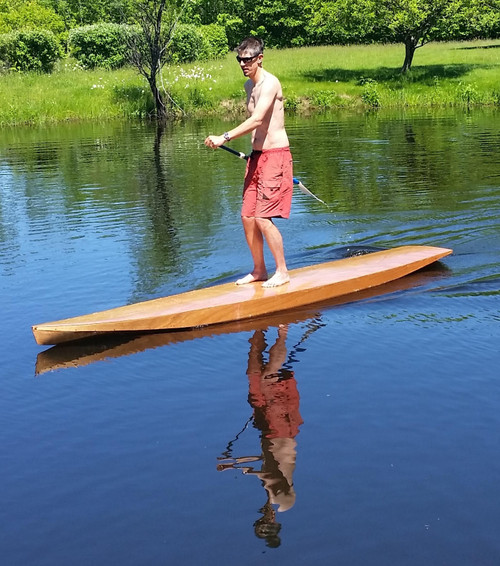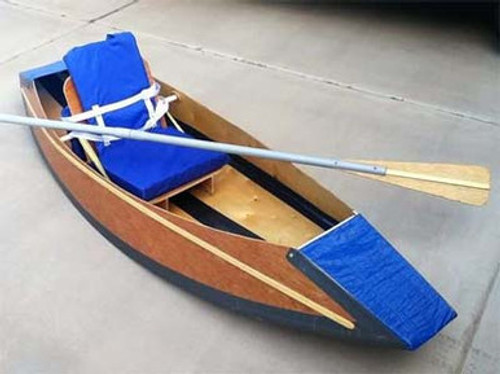For printed plans, click HERE
This board is designed for easy distance travel. It is stable enough for a beginner who has tried a basic board a couple of times. It might even win some races and it is definitely a beautiful thing. It is light for easy carrying and better performance. If you need to know more than that, you are welcome to keep reading :)
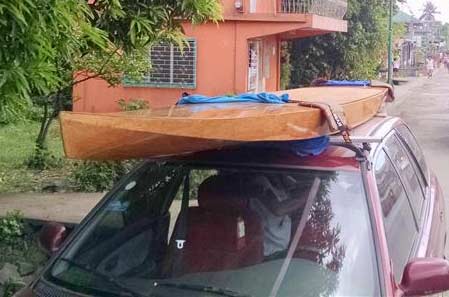
Design Rationale
I don't have much experience with SUPs so I have handed it over to one of the best known local instructors
Often a particular idea can sell a boat, but has very little relevance for normal use. In the case of SUPs, Stand Up Paddle Boards, most share a great degree of surfboard design heritage and the advertising does show people carving on ocean swells.
But moving to see what happens in "real" life, for every photo showing a SUP carving a wave, there are dozens, maybe even hundreds of people daytripping, picnic cruising, paddling around in a bay or up a river, harbour touring, flatwater marathoning, Fun Races or other non surfing pursuits.
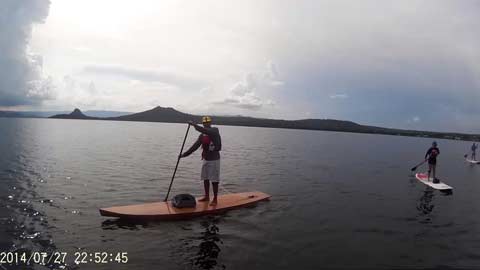
So talking to the students and the SUP instructor that works out of the same place we teach sailing from on Lake Ta'al (two syllables TA and AHL), the 18 by 8km lake it became clear that:
- The idea of standing up and it reinforces the simplicity theme in the use of SUPs. People like and respond to that. Regardless of what I think about the relative efficiencies of different human powered craft, if people like it then, they become engaged with lakes, ocean bays and rivers, and boats. Which is great.
- While buying a production SUP might not be too large a financial outlay in developed nations, $2000 plus import costs is just an unimaginable amount of money to most here and 2K for a rather dull board might be viewed as being too much. So after people have a few lessons on a hire board, they start being limited about what they can do. After living here in the Philippines, I know the costs building one's own boat can be somewhere between a quarter and an eighth of buying an import. And that $2000 will be a very basic board. What if someone wants something light, beautiful and fast, while being stable?
In developed economies the cost is likely to be $500 to $600 dollars (AUD or USD), Philippines and the region, around 12,000peso (USD300)
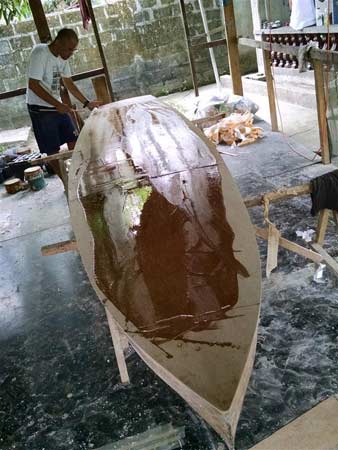
So lets cast aside the whole surfboard idea. We end up with a boat that is expected to travel on flat or rough river, lake or non surfing sea conditions at the same speed as a reasonable Kayak or Rowing boat. It will still surf on Lake, river and unbroken ocean swells, but will probably be no good at carving surf waves.
This SUP is designed to be much more easy to paddle at normal cruising speeds of 3 to 4 knots - easy range without getting tired and it can walk away from normal production boards for the same effort. It hits the technical numbers around where a good rowboat or kayak would be for normal cruising speed. Optimised for non surfing - just getting to where it has to go.
It also a bit less wetted surface (friction drag from the water) than standard boards because the corners of the board are out of the water. The racing boards do this too ... but they do it by cutting away the corners. Cutting the corners of the platform on fast boards reduces stability, retaining the corners with this board but moving them up out of the water, the Ta'al Touring SUP has them there when the board heels/tilts.
Anything this flat will still catch lake and small waves easily. Maybe swings and roundabouts. A little faster when not wave riding for the same effort and that slightly higher travelling speed might make it catch a few more waves. But where the board is really catching and running distance on the waves it will have a slower top speed than a more surfboard oriented design. It is not intended for surfing at the beach, but it could handle landing through moderate surf.
Paddling trials have shown it is stable enough for a beginner, turns like a shorter board (the ends are out of the water and not dragging through the turn) and initially seemed reasonably quick compared to the stock board I was paddling. But then we found the Ta'al SUP had a big lump of weed caught on the fin. With that removed, it just walked away from the production board, puff puff puff from the designer on the manufactured board.

Structurally the board follows the setup of the Australian and Japanese scow Moth Dinghies. They mastered the very lightest plywood construction methods with weights of boats hulls down toward 3-½ pounds per foot of length. These boats are stressed well beyond what any normal SUP will meet in normal use. Speeds in rough water of 10 to 15 knots, occasional full speed nose dives with the boat submarining, jumping off waves and crashing down on the next wave. Thats with all those bits of 8mm (5/32") framing!
This gives a great deal of confidence in the structure.
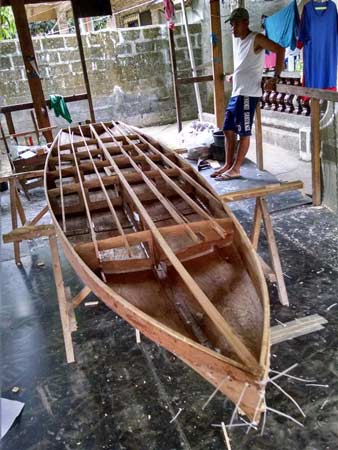
There are some neat tricks for making such a light structure durable and they are documented in the plan. Tricks to stop the ply cracking beside the stringers, stopping you from falling through the deck and stopping any chance of deck cracks across the bulkheads.
I have made some suggestions on going really crazy about weight saving for those who want to try (along with more techniques to make such structures durable). Based on the final iteration of Moths, it makes 2mm (1/12") ply externals and 0.7mm (1/16") internal ply look quite conservative :) I will keep records of weights people achieve and how to build a database for builders to see what their choices will lead to.
Anyone for a 6kg (14lb) board? It won't be legal, but it will be very pleasant to carry to the water!
Our board feels rock solid with the 3mm decks. I invite people to punch the deck in the traffic area if they doubt. but after feeling the lack of flex in normal use they know it is very tough.
The prototype built out of relatively heavy hardwoods with hardwood framing came in at around 12 to 14kg, well in the normal production board range. But much lighter boards are possible. Please feed back to me about what you achieve in your build and how and I will publish it to help others who want to continue to push the envelope.
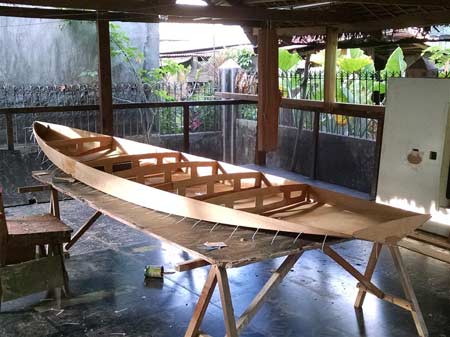
Light weight is illegal, for some silly reason :)
This board is the length for the standard 12.5ft SUP class. Here we prove that light weight is not expensive.
The main SUP racing class rules have very conservative minimum allowable weights. This board would meet those weight limits with the Developing Country level build, but be significantly lighter following some of the suggestions above.
Be aware that being built light might exclude it from this popular class. It would still be able to enter events in the SUP Open class. As more boards get built I will keep records of materials and weights so builders can aim accurately at the weight they want.
I guess the joke is that nobody will imagine how light your timber board is if you don't tell them so you might get away with it, just grunt when you lift it before the event. The manufacturers set the weights of the classes and most people think wood is a heavy building material compared to more "industrial" processes. Are they so totally wrong :)
Meanwhile all the production boards will have advertising that proclaims the research that makes their boards the "lightest ever".
But just as we are pushing aside the surfing requirement to get long legs on the water most of us paddle on, we are also prepared to ignore the class weight rules to get a board that is a delight to carry, store, lift onto the roof racks and paddle.
Sensible compromises (or non compromise!) for real use patterns.
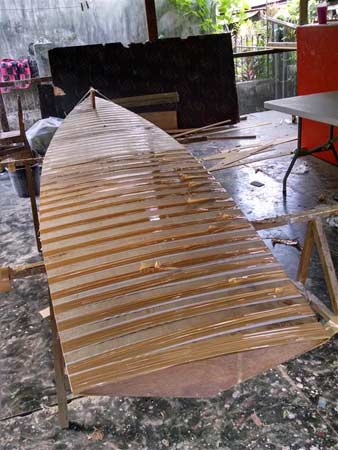
Plans are for people with some boatbuilding experience
This is not one of my step by step plans that explain every building step.
They assume some knowledge and experience
- This boat MUST use epoxy. It is a higher specification build and Stitch and glue method that pushes materials closer to their limit than normal boat structures. Alternative glues will not cut it and are a substantial risk - forget Gorilla glue, Titebond, PL-Premium - only epoxy to be used. Polyester resin must not be used at any stage - it doesn't stick to timber adequately for reliable failsafe strength.
- This boat must use good quality materials. Builders will know that using low quality materials in a particularly sophisticated construction is folly.
- Builders will know that cleaning up as you go saves bucketloads of sanding later.
- Builders must know how to setup the next phase of work with locations and any clamping worked out in advance by doing a dry run to make sure everything is organised BEFORE mixing epoxy. This means that epoxy can be quickly spread over the laid out surfaces and not left to heat up and go hot in a container.
- Builders must be able to use fibreglass cloth and tape and keep surfaces smooth without adding too much resin.
- Builders must be self disciplined to keep weight out of the boat at every building stage. Heavy boats happen because builders decide that extra weight is warranted, usually for nebulous reasons or because they want to do something with extra epoxy. If building lightweight boats like this project, the best place for extra weight is the trash bin. Remember this at every stage.
Any feedback on errors found is gratefully received. The idea is that these plans should be improved until they are as perfect as possible for the intended audience. This happens through feedback and is an essential part of my product development.
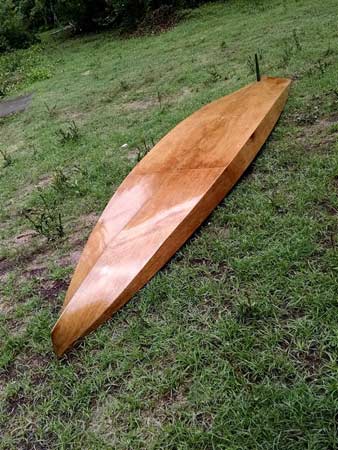
Materials
Main materials
Three sheets of 3mm gaboon or other good quality marine plywood
6 litres (1.5 gallons) epoxy
0.5kg (1lb) colloidal silica
0.5kg (1lb) wood flour
2m (7ft) 70gsm or 140gsm (2oz or 4oz) woven glass cloth.
Cedar or Paulownia framing - yes, it looks light, but it is a more conservative version of Moths that have to handle much higher stresses. If it looks small, you will really learn something about structures in this build! :)
Deck and bottom stringers 8 off 8mm x 24mm x 3.3m (5/16 x 7/8 x 11ft)
Plywood bulkhead stiffeners 8mm x 8mm x 12m (5/16 sq x 40ft)
Deck Centre stringer (and homemade finbox option) 8mm x 19mm x 4.2m (5/16 x ¾ x 14')
Small Boats Monthly article by Christophe Matson
- Length - 12ft 6 inches
- Beam - 30 inches
- Weight - Developing countries - 12 to 14kg (likely with available materials)
- Weight - Developed countries - 8 to 11 kg (normal with quality materials)
- Crew capacity - 170 to 230lbs is normal. More is very likely to be OK looking at the way the prototype sits in the water. There is sufficient bow overhang and the stern shape is likely to produce much less drag than conventional boards with extra weight. For very big people it might be quite possible to scale it all up very slightly. A 5% increase in linear dimensions gives another 30lbs. A 7% increase gives 45 pounds (275) and still is in the normal width range but if ever raced will have to be in Open Class. I can provide
drawings modified this way at modest cost

